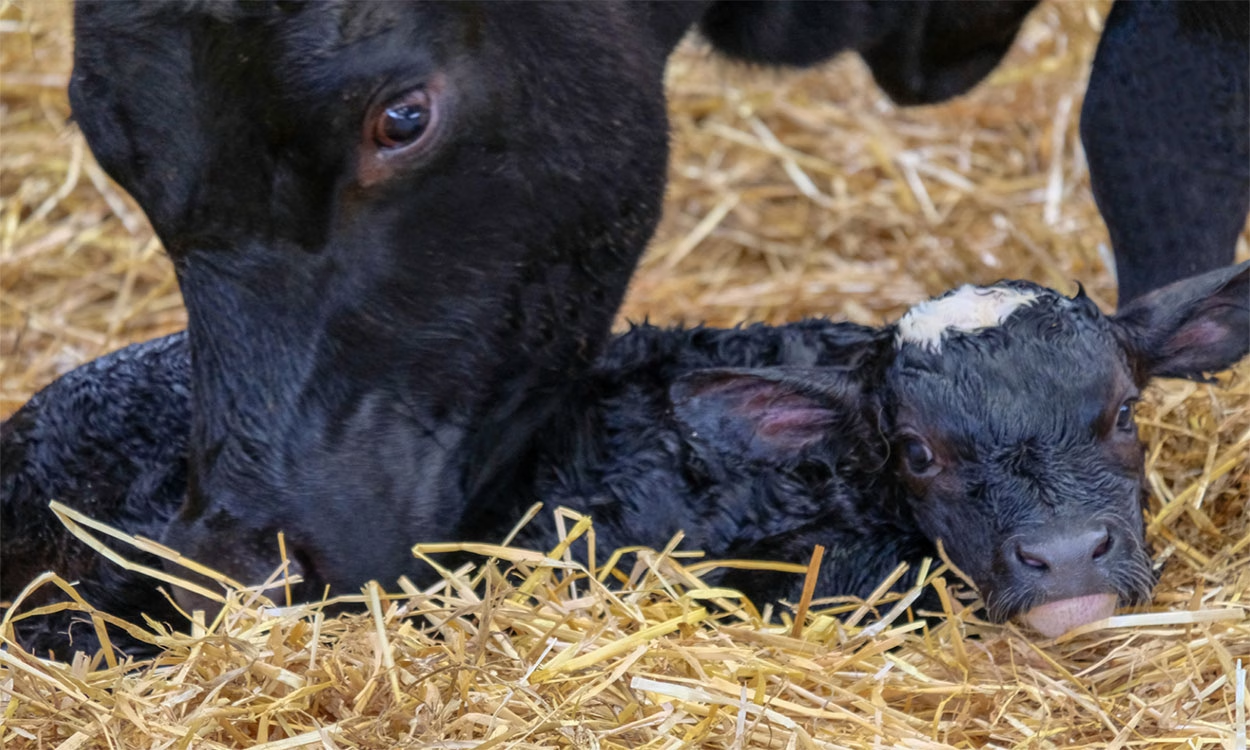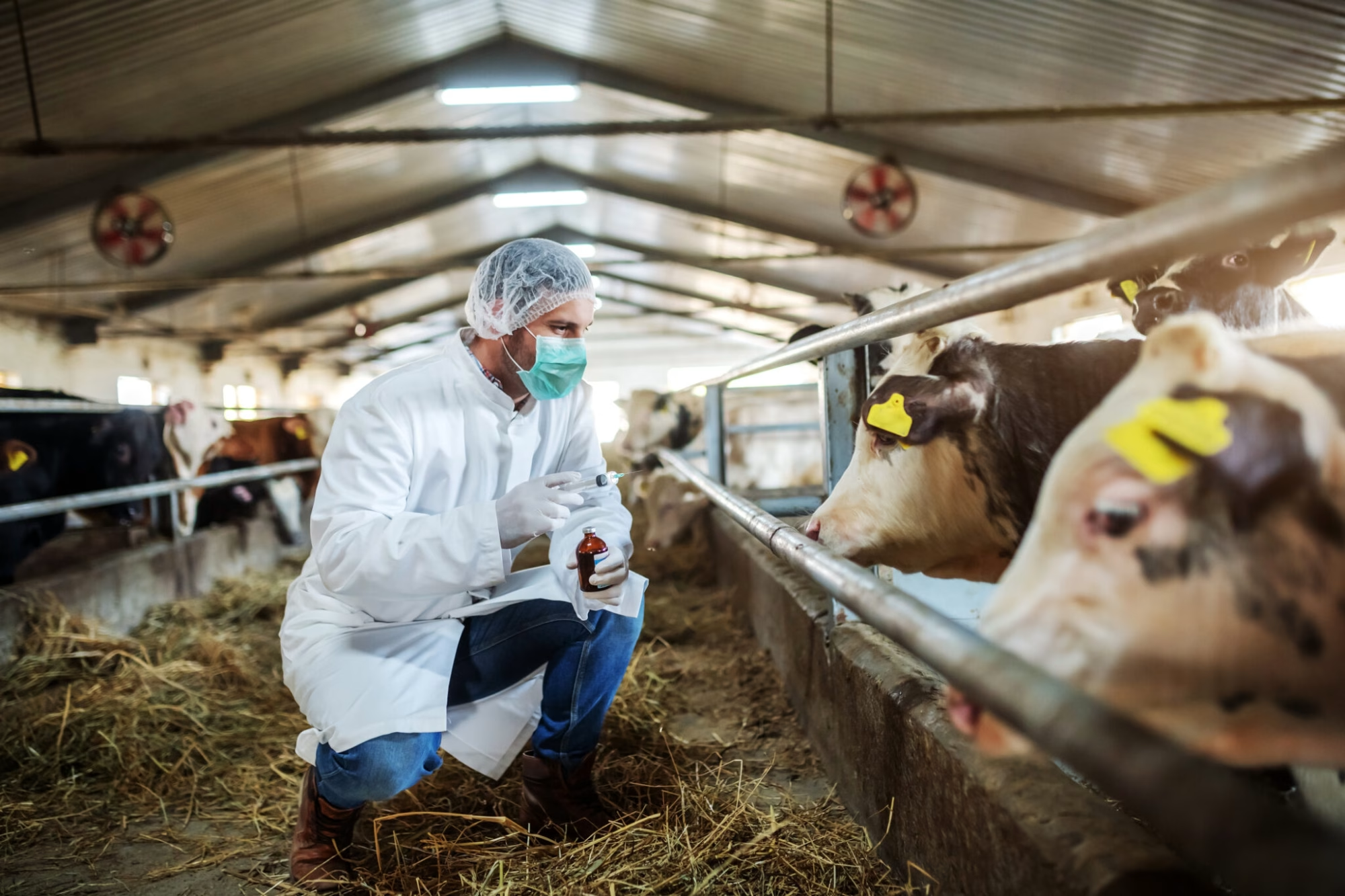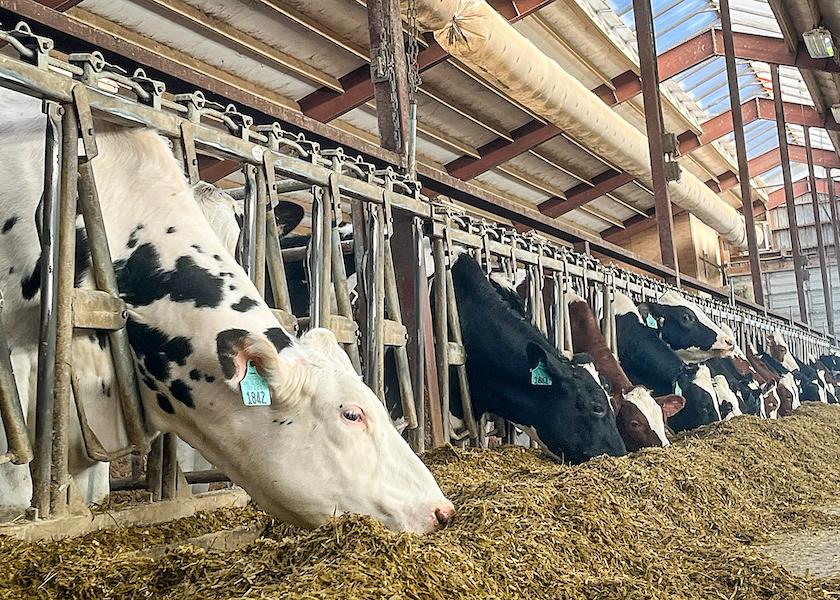Boost milk production with calving ease and age at first calving. Are you maximizing these factors?
Summary: Calving ease and age at first calving (AFC) significantly influence dairy cow productivity and health. Research on over a million calving events across 687 farms reveals that higher calving ease (CE) scores negatively impact milk production and components like fat and protein. The study also shows a relationship between AFC and CE, with optimal ages varying by breed. Proactive management, including diligent data recording, genetic selection, and proper nutrition, can mitigate CE issues and enhance milk yield. These findings underscore the importance of strategic breeding and management practices for dairy success.
- Higher calving ease (CE) scores can negatively impact milk production, fat, and protein components.
- There is a significant relationship between age at first calving (AFC) and CE, with optimal ages depending on breed.
- Proactive calving management can help reduce CE issues and improve milk yield.
- Diligent data recording is essential for managing CE and AFC effectively.
- Genetic selection plays a crucial role in enhancing calving ease and productivity.
- Proper nutrition is foundational for successful calving and increased milk production.
- Strategic breeding and management practices are key to dairy farm success.

Have you ever wondered why some cows produce more milk than others? Surprisingly, the solution often rests in events before the milking process starts. Calving ease and age are crucial but usually ignored elements influencing dairy farm output. Understanding these critical variables may mean the difference between standard and exceptional milk output.
In this post, we’ll look at the subtleties of calving ease and age at first calving, using data from an extensive survey of 687 dairy farms in the United States. We’ll look at how these variables affect your cows’ milk output, energy-corrected milk, and the fat and protein composition of the milk. What’s the goal? To provide you with practical information that will help you maximize your herd’s performance and, eventually, your bottom line.
The Importance of Calving Ease
Have you ever considered how calving ease (CE) impacts the success of your dairy operation? As stated, CE describes how cleanly a cow gives delivery. Higher ratings suggest more complex deliveries, which may lead to issues for the cow and the calves.
CE scores vary from 1 to 5, with one indicating ease and 5 indicating great difficulty. These values are essential because difficult calvings may influence overall herd health and production. For example, calvings with a CE score of more than two considerably impact milk production (MP) and the fat and protein composition of the milk. Cows earning a 4 in CE showed a significant drop in milk production, with the lowest lactation peaks among the tested breeds: Holstein (43.1 kg/d), Jersey (35.8 kg/d), and dairy hybrids.
But it isn’t just about the milk. Complications associated with difficult deliveries can affect calf growth. Poor CE scores may slow calf development, making the first few days of life especially more essential. The research, which comprised over 1 million CE observations from 687 dairy farms in the United States, offers critical insights into these effects.[[Source]
Understanding and increasing CE may help your dairy farm achieve increased productivity and healthier animals. So, the next time you analyze herd performance, consider how CE ratings may impact your bottom line.
Understanding Age at First Calving (AFC)
The age at first calving (AFC) is when a young female cow (a heifer) gives birth for the first time. This milestone is essential in dairy production for a variety of reasons. Proper AFC may significantly improve milk output, herd health, and farm profitability.
Why AFC Matters
Your cows’ AFC has an impact on their long-term production and health. For example, optimum AFC may result in higher milk production and more efficient reproductive function. Conversely, premature or severely delayed calving might have unfavorable consequences. So, what is the ideal AFC for various breeds?
Optimal AFC for Different Breeds
According to research, the ideal AFC differs by breed. For Holsteins, the optimal AFC is about 27 months, whereas for Jerseys, it is around 22 months. This is based on thorough research that included 794,870 calving ease (CE) observations from many breeds.
The AFC-Milk Production Connection
Your cows’ milk output is strongly linked to their AFC. Cows who calve at the appropriate age produce more milk, peak sooner, and have superior overall health. Cows having a CE score of more than 2 demonstrated a decrease in milk output and components. A CE score of 4 indicated the lowest milk output, with Holsteins, Jerseys, and crossbreeds producing 43.1, 35.8, and 39.2 kg/d of milk at peak lactation, respectively.
AFC and Herd Health
In addition to milk production, AFC influences overall herd health. Cows who calve at the right age have fewer difficulties and higher fertility and survival rates. Breeding at the correct time helps avoid the hazards of early or late births, lowering veterinary expenditures and boosting the herd’s overall health.
Connecting Calving Ease (CE) and Age at First Calving (AFC): Impacts on Milk Production
Connecting calving ease (CE) with age at first calving (AFC) provides insights for dairy producers. The research demonstrates that both variables have a considerable impact on milk output. Let’s see how.
First, calving ease is critical. When the CE score exceeds 2, the milk supply diminishes. Cows with a CE score of 4 produce much less milk, with Holsteins averaging 43.1 kg/d, Jerseys 35.8 kg/d, and dairy crosses 39.2 kg/d. Difficult calvings might reduce a cow’s capacity to produce milk efficiently. These limitations apply to raw milk output, energy-corrected milk (ECM), and fat and protein content.
Age at first calving (AFC) is equally important. According to the research, AFC has a quadratic effect on CE. Holsteins calving at 27 months and Jerseys at 22 months had the lowest CE values. Younger cows—those calving for the first time—tended to have smoother calvings, maximizing milk yield and composition.
The age at first calving also impacts CE’s effect. When AFC is included as a covariate, previously observed CE interactions with covariates, such as calf sex and breed, become less significant. The ideal AFC mitigates the negative consequences of high CE scores, resulting in increased milk output and healthier cows.
So, what is the takeaway? Careful management of both CE and AFC may dramatically increase your herd’s output. Ensure your cows calve easily and at the appropriate age to optimize their milk production potential. Your efforts may increase milk production, better energy-corrected milk, and more significant fat and protein content, providing more value and efficiency in your dairy business.
Boosting Milk Production: The Impact of Calving Ease and Age at First Calving
According to a survey of 687 dairy farms, cows with a calving ease score of more than 2 had lower milk output and components, with the lowest values recorded in cows with CE = 4 (source). For example, Holstein, Jersey, and dairy crosses (XD) with CE = 4 showed the lowest milk lactation peak (MLP), averaging 43.1, 35.8, and 39.2 kg/d, respectively. The study found that the linear and quadratic components of Age at First Calving (AFC) were significant, emphasizing the need to regulate CE and AFC to achieve optimum output results.
The research found that cows birthing males had higher CE scores, with Holsteins having the lowest CE at 27 months and Jerseys at 22 months AFC. Addressing these factors may increase production and improve overall dairy farm performance (source).
A Proactive Approach to Managing CE and AFC Here are some actionable tips:
To boost milk production, a proactive approach is essential when managing Calving Ease (CE) and Age at First Calving (AFC). Here are some actionable tips:
Monitor and Record Data Diligently
Accurate data collection is critical. Record each cow’s CE and AFC scores regularly. Technology, such as herd management software, can be used to arrange this data. Having more data helps you better analyze patterns and make educated choices.
Genetic Selection is Key
Choose breeding bulls with a verified low CE score. According to studies, the lowest CE is often found in certain breeds at ideal AFCs—27 months for Holsteins and 22 months for Jerseys. (https://www.thebullvine.com/news/impact-of-accelerated-age-at-first-calving-on-dairy-productivity-and-fertility-a-comprehensive-study/). Investing in sound genetics is the first line of defense.
Nutrition: The Foundation of Success
Ensure that your cows get an adequate diet according to their life stage. Proper feeding may significantly decrease calving problems. Consult a nutritionist to develop a food plan for the dam and calf.
Utilize Proper Calving Management
Please keep a watchful eye on cows approaching their calving season. Provide a clean and pleasant birthing environment, and be prepared to help if issues develop. Early management may reduce severe CE scores and protect the health of both the cow and the calf.
Optimal Age at First Calving
Choosing the optimal AFC requires examining both breed and individual cow circumstances. While 22-27 months is typically considered optimum, it altered according to herd statistics. First, heifers should be well-developed but not too conditioned.
Regular Health Checks
Schedule regular veterinarian appointments to detect any health problems early. Healthier cows often produce easier calves and perform better overall.
Peer Networking and Continuing Education
Connect with other dairy farmers and industry professionals. Join forums, attend seminars, and get industry publications. Sharing experiences and keeping current on new research may help you implement best practices.
You may improve milk production and the health and productivity of your herd by closely monitoring CE and AFC, selecting for favorable genetics, maintaining optimum feed, and giving watchful care.
The Bottom Line
We’ve examined how Calving Ease (CE) and Age at First Calving (AFC) might improve your herd’s output and overall performance. According to the study, decreased CE scores and appropriate AFC are necessary for increased milk output and healthy cows. By regularly monitoring these indicators, making educated genetic decisions, and concentrating on better nutrition and calving management, you may significantly increase the performance of your dairy farm.
So, here’s a question: Are you ready to take the next step and use these tactics to maximize your dairy farm’s potential?
Implement these tips immediately to see your herd and bottom line grow!













